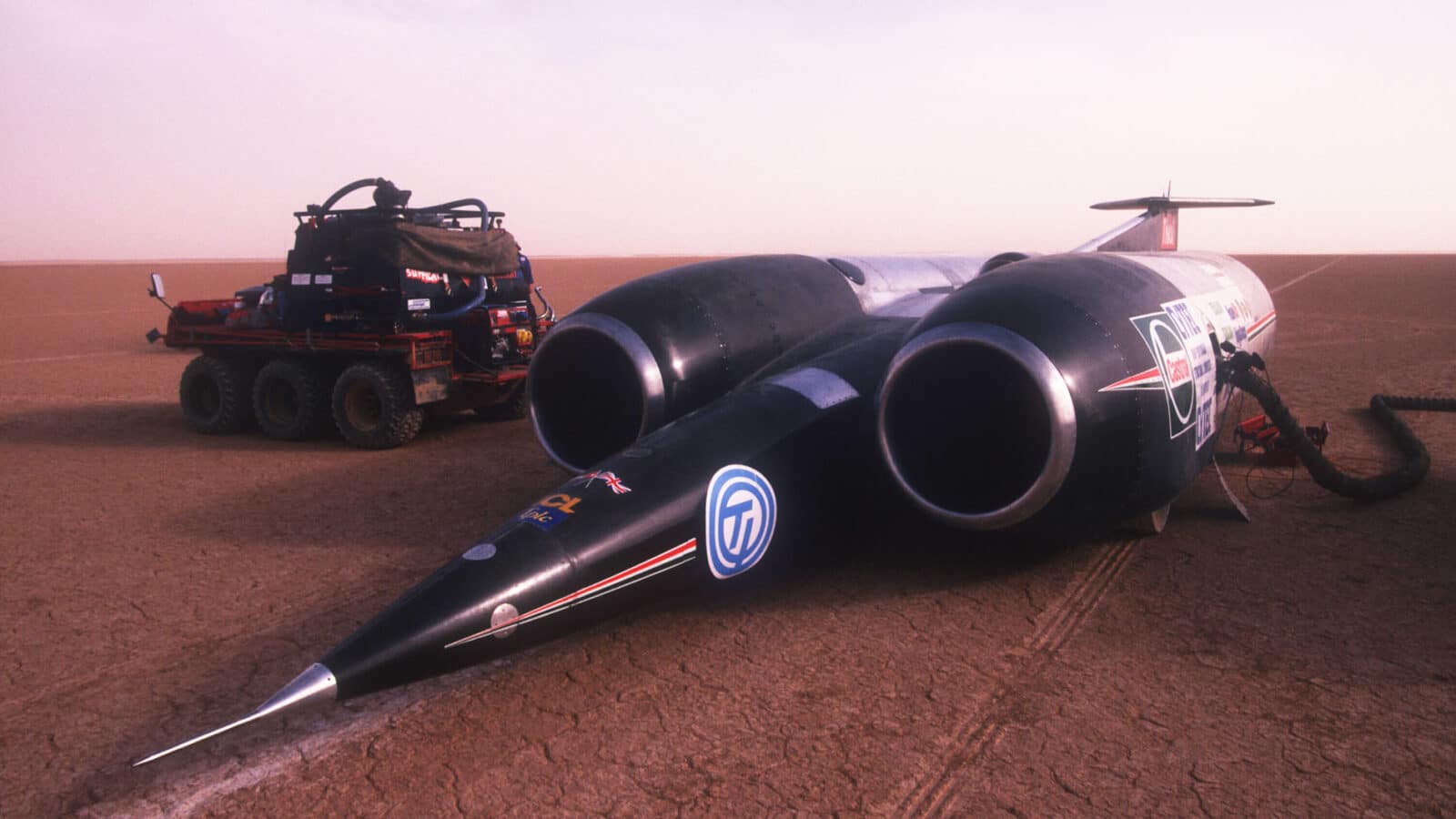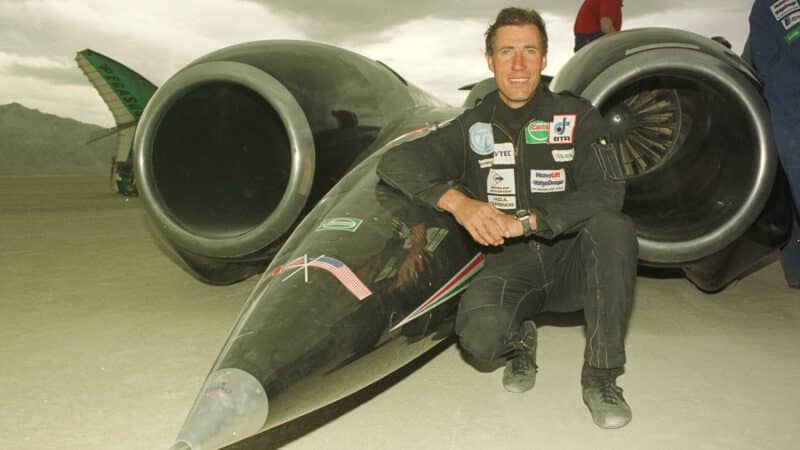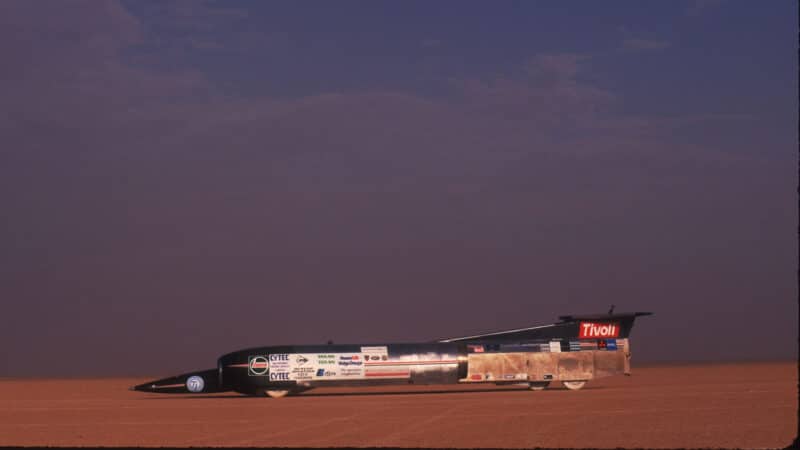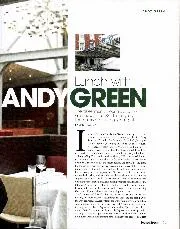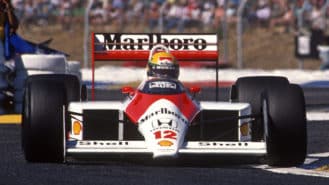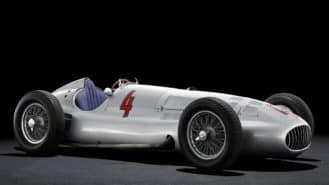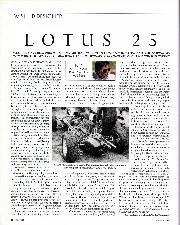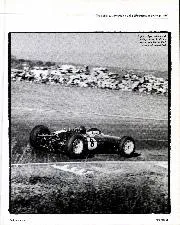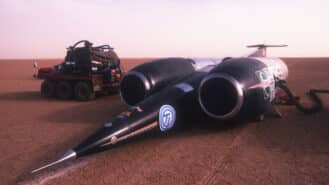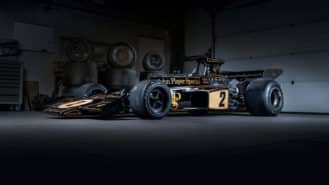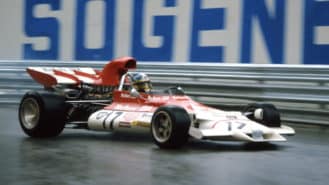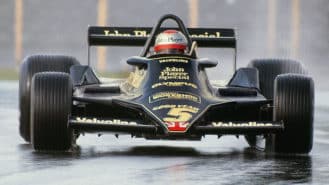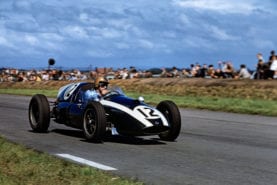The guy who designed it had a lot of experience. The layout was very different from some of the other record cars, which had a trike-type design. But clearly they got it right, with the engines at the front and a long tail to stabilise it, with rear-wheel steering that they tested on the back of a Mini!
Just consider things like the stresses on the wheels.
All of that would have scared the hell out of me. You don’t need the wheels to be exploding, or the ride height to be wrong. Every little bit was performing, and they got their sums right. They considered driver safety when they placed him in the middle of the engines, but how can you protect a driver at 800mph? You’ve got to have it not go wrong.
Thrust SSC is a pure thing, a vehicle for just one purpose — to beat the Sound Barrier on land. It won’t go around a circuit or anything like that, it’s just built to go in a straight line very quickly. And because there are no rules, the solution could be anything.
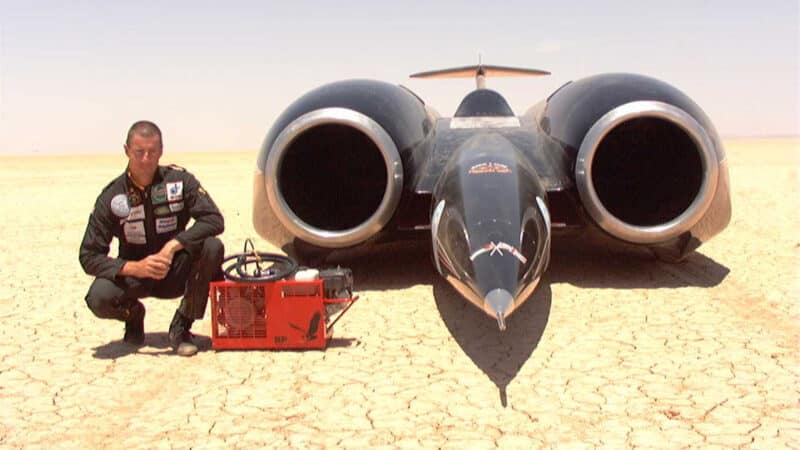
Thrust SSC was powered by two formidable Rolls-Royce jet engines
Getty Images
A record car is going to be limited by aerodynamics, and not by how heavy it is. As long as you have enough space to get up to speed, it doesn’t need to be light and elegant, it needs to be strong and butch. I read that it was as powerful as 145 F1 engines, and I’m surprised it wasn’t more than that.
Driver Andy Green was a very brave man, because when you venture into areas where nobody’s gone before, and something goes wrong, you’re not coming back. When you read that he had 45 degrees steering lock on because the car was drifting at 745mph, it’s pretty scary!
I don’t think there will be anything else like it again. Once you’ve broken that bather, where are you going to go? You’ve got to go too far to get another significant breakthrough. Someone might say that 1000mph is the next one, but you’d probably need a big corporation to do that, and a big corporation is unlikely to get involved because the risks and implications of getting it wrong are so enormous.
Mike Gascoyne was talking to Adam Cooper
